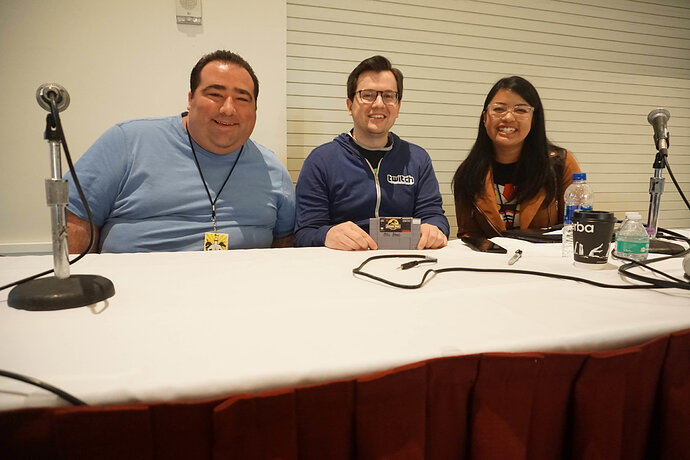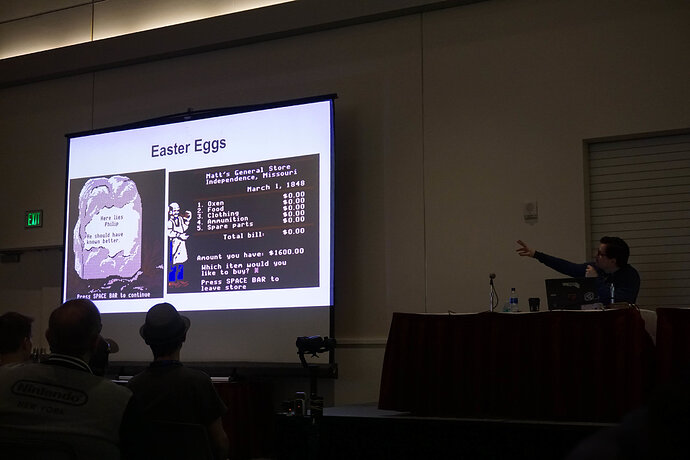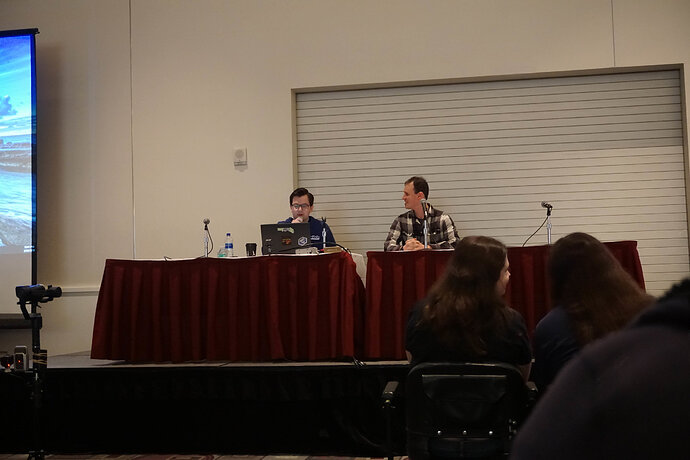Originally published at: https://geektherapy.org/the-gaming-historian-takes-us-to-school-at-the-socal-retro-gaming-expo-2019/
SoCal Retro Gaming Expo 2019
Author: Stefanie Bautista
Ever played a classic game like Tetris and, as you fail to get the long “I-shaped” bar into the five-line slot you’ve been waiting to clear for the last couple of minutes, wonder who in the heck came up with this concept? Why is a bunch of blocks that look like funny shapes falling? Why do we fit them all into geometric arrangements that have caused us hours and hours of fun and anguish? Who created this classic pastime that has filled me with so much anger and yet, so much satisfaction when I win?
If you’re looking for answers to these questions, look no further than Norman Caruso, The Gaming Historian whose YouTube channel explains the origins of your favorite retro games like Tetris and Super Mario Bros. With over 500k subscribers, he is one of the only people in the gaming community who digs into digital archives worldwide to uncover the secrets and origins of our favorite retro games.
At the SoCal Retro Gaming Expo, held at the Pasadena Civic Center on Sunday, February 24, 2019, attendees were allowed to meet and learn from him at his interactive Q&A panel.
Opening the panel, Caruso welcomed the room with his laptop open, ready to take us to school on one of our favorite retro games. Oregon Trail was the subject of choice, and as many gamer fans know, the game is notorious for being the one educational game that repeatedly killed its players through dysentery.
Diving the game’s origins, Caruso expounded upon its humble beginnings as an educational tool. The first game, it turns out, was originally developed by Don Rawitsch, Bill Heinemann, and Paul Dillenberger in 1971 and produced by the Minnesota Educational Computing Consortium in hopes that kids would learn more about the famous trip to the West by using a new-fangled contraption called “the computer.”
Caruso showed images of the early developments of the game via Powerpoint, including photos of the developers and the Apple I and II computers used as the game developed from an educational tool to a full-on adventure.
Caruso then shared some “Easter Eggs” from the game that many people did not know about. Gaming Easter Eggs are little secrets that game developers hide in the games that can only be unlocked or encountered under specific circumstances. He let it spill to the audience that in the early versions of the game, one could use a negative value at the General Store when shopping for survival items. Using a negative value meant that players technically never spent the money, and at the end of the transaction, they would keep both the money and the goods, thus increasing their chances of survival!
The room laughed uproariously at this notion of cheating death on The Oregon Trail, as it was very frustrating to die of dysentery and hunger consistently. However, Caruso mentioned that later versions of the game found out about the bug, so the Easter Egg was a gem only found in the earliest versions.
He then went into a segment named “Who Wants to be A Millionaire, Gamer Style.” Caruso used a nifty teaching website to play a version of the famous game show Who Wants to be A Millionaire with the audience but with challenging questions about video games found in his YouTube videos. Participating audience members couldn’t win up to a million dollars but could win bragging rights and a chance to flex their knowledge on super-random video game trivia.
The questions started: “In 1985, Nintendo released a spin-off of Punch-Out called…” and quickly became more difficult, questions like “This person would go off to the Tetris Company with Aleksey Pajitnnov.” In total 3 audience members took their chances to win a “Million.” Overall, it was a great way to experience how much people know and love retro video games.
Caruso also took the time to answer audience questions, sharing his ideas and perspectives on the content he created. Fans asked what his most difficult game to research was, and he responded with Aladdin, which he described as an obscure addition to the Sega Genesis console that was supposed to increase memory and gameplay, but turned out to be a scam. Caruso emphasized that when choosing a topic, he asks himself, “Is there a conversation I can add to this subject?” If he can’t, he won’t cover it.
The Gaming Historian panel was a fun, interactive, and educational way to start the otherwise slow Sunday morning at the Pasadena Civic Center. A huge part of loving classic video games is loving the history behind what made them so great. Norman Caruso does an incredible job unearthing all the wonderful stories underneath our favorite classic titles. As a lover of classic games, it’s always nice to find out that there are people out there just like me: people who are just as obsessed as I am about the history of the games that made us into the gamers we are today.
You can watch The Gaming Historian here on YouTube to learn more!


